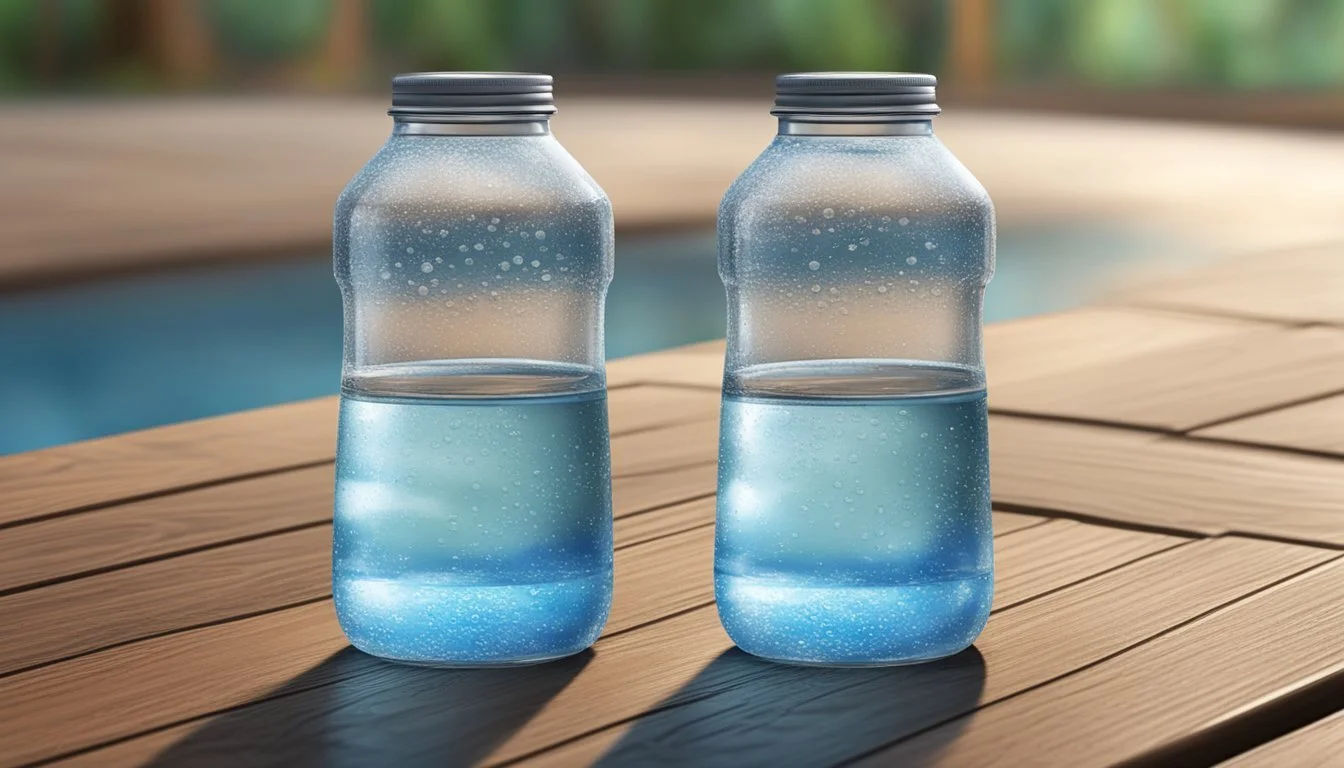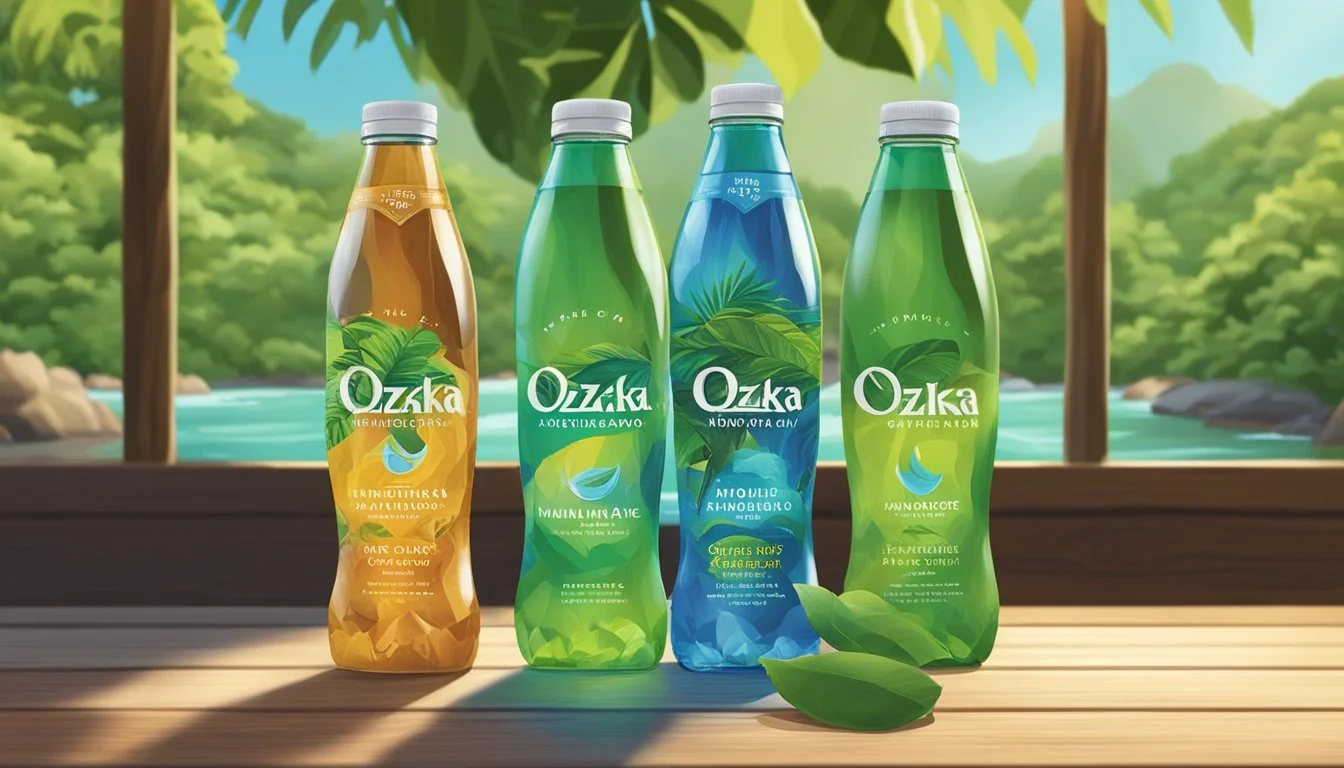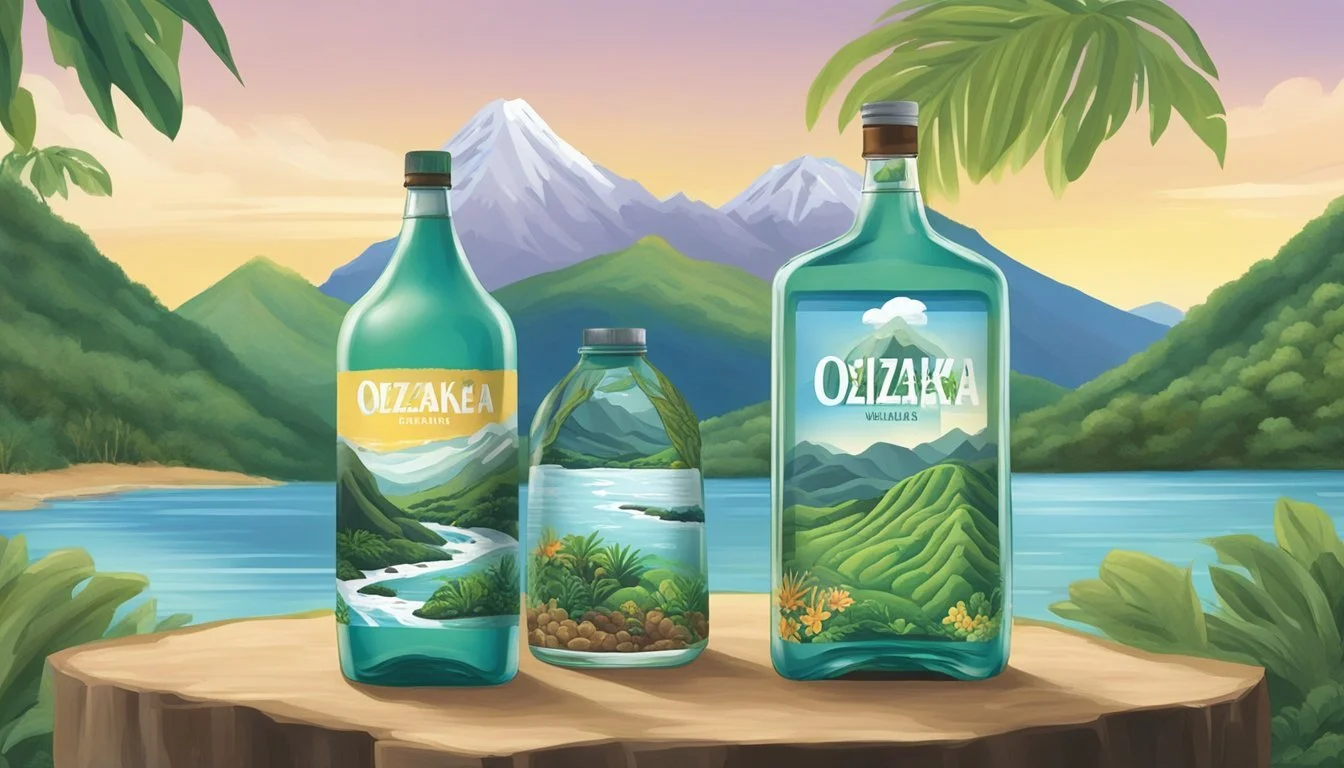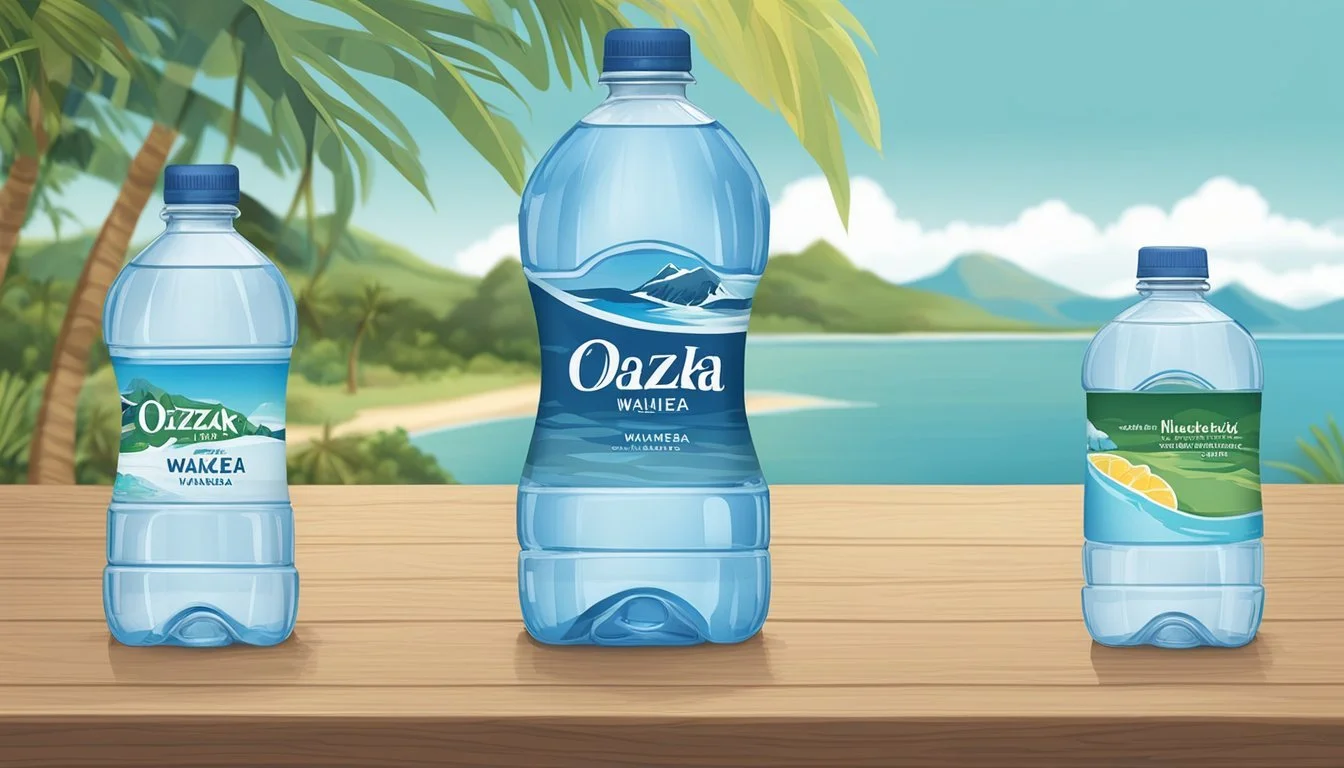Ozarka vs. Waiakea
Ultimate Comparison of Bottled Waters
When it comes to choosing the best bottled water, both Ozarka and Waiakea stand out for their unique qualities and distinct origins. Ozarka, sourced from natural springs in Texas, offers a pure and refreshing taste that has made it a staple in many households across the United States. On the other hand, Waiakea, originating from the volcanic slopes of Hawaii, prides itself on a naturally alkaline pH and sustainable practices, including being the first US bottled water certified as Carbon Neutral.
For those seeking a balance of eco-consciousness and exceptional taste, Waiakea emerges as the superior choice. Waiakea’s commitment to sustainability and charitable contributions adds significant value beyond just hydration. That said, Ozarka remains a reliable option for those who prioritize regional sourcing and straightforward purity in their bottled water.
With differing priorities and preferences in mind, this comparison delves into the specific attributes of each brand, from taste and health benefits to environmental impact. By understanding the strengths of both Ozarka and Waiakea, readers can make an informed choice that best aligns with their values and needs.
Understanding Bottled Water
Understanding the different aspects of bottled water can guide consumers in making informed choices. Key areas include types, sources, filtration processes, mineral content, and regulations.
Types of Bottled Water
Bottled drinking water comes in various types including spring water, mineral water, purified water, and artesian water.
Spring water is collected from natural springs and contains natural minerals. Mineral water must contain specific amounts of minerals that are present in the water at its source. Purified water undergoes processes like reverse osmosis or distillation to remove impurities. Artesian water is sourced from confined aquifers.
Bottled Water Sources
Sources of bottled water vary significantly. Spring water is sourced from natural underground springs, ensuring a natural mineral content.
Mineral water is drawn from natural mineral springs that have historically been places of sought after for their health benefits. Purified water originates from either surface water or groundwater but undergoes strict filtration and purification to eliminate impurities.
Filtration and Purification Processes
Purification processes for bottled water are meticulously structured to ensure high quality. Reverse osmosis is common, where water is forced through semi-permeable membranes to remove contaminants.
Distillation involves boiling water and then condensing the steam back into a liquid, which removes minerals and contaminants. Ozonation is another technique that uses ozone gas as a disinfectant. Natural spring and mineral waters often undergo minimal treatment to preserve their original compositions.
Mineral Content and Health Benefits
Mineral content in bottled water can include calcium, magnesium, and potassium, which are essential electrolytes.
Spring and mineral waters naturally contain various beneficial minerals. For instance, Waiakea water has an alkaline pH of 8.8 due to its volcanic filtration process, which may help neutralize body acidity. Adequate mineral intake through drinking water can contribute to overall health, supporting bone health and muscle function.
Bottled Water Regulations
Regulations ensure the safety and quality of bottled water. In the United States, the FDA regulates bottled water as a food product, setting standards for contaminants, labeling, and manufacturing practices.
EPA guidelines for tap water also influence bottled water regulations. Compliance with these regulations ensures bottled water is safe for consumption. Companies are required to conduct regular quality testing and report any deviations to maintain consumer trust and safety.
Brand Profiles
This section covers the origins, key features, and unique aspects of both Ozarka and Waiakea bottled water brands to provide a thorough comparison for readers.
Ozarka
Ozarka, a well-known bottled water brand, sources its water from natural springs in Texas. The brand prides itself on providing 100% natural spring water. Ozarka's commitment to sustainability includes using recycled plastic in their bottles and adopting eco-friendly practices in their operations.
The water is known for its crisp, clean taste, which is often attributed to the unique mineral composition drawn from the region's aquifers. Ozarka emphasizes its deep connection to the local environment and communities, reinforcing its image as a reliable and trusted source of spring water.
Waiakea
Waiakea sets itself apart by sourcing its water from a volcanic well in Hawaii, boasting a naturally alkaline pH range of 7.6 to 8.2. This water is rich in electrolytes and essential minerals, thanks to the volcanic rock filtration process. Waiakea aims to promote environmental sustainability and social responsibility.
Certified Carbon Neutral, Waiakea donates over 5% of its revenue to nonprofits. The brand's focus on purity, health benefits, and eco-conscious practices makes it a unique player in the bottled water market. Customers often praise Waiakea for its smooth taste and healthful properties.
Environmental Impact and Sustainability
Ozarka and Waiakea differ significantly in their approaches to environmental sustainability and packaging. Their efforts can be evaluated in terms of packaging waste and their sustainable practices and certifications.
Packaging and Waste
Ozarka primarily uses plastic bottles, which are convenient but contribute to plastic waste if not recycled properly. Plastic packaging requires resources such as petroleum, which increases the carbon footprint. Despite efforts to promote recycling, plastic waste remains a significant issue.
On the other hand, Waiakea uses 100% rPET (post-consumer recycled PET) for its bottles. These recycled bottles use 85% less energy during manufacturing and reduce carbon emissions by 79% compared to virgin plastic bottles. Additionally, rPET bottles use 99% less water in production, making them a more environmentally friendly option.
Sustainable Practices and Certifications
Waiakea stands out with its commitment to sustainability. It is the first US bottled water to be certified Carbon Neutral, showcasing a dedication to reducing carbon impact. Waiakea also donates over 5% of its revenue to nonprofits, supporting both local communities and global environmental efforts. This practice emphasizes its focus on people and planet over profits.
Ozarka, being under the Nestlé Pure Life brand, has sustainable initiatives but does not match Waiakea's level of certifications. The focus is mainly on promoting recycling and reducing plastic waste but lacks broader environmental certifications. While efforts are made, the brand does not exhibit the same rigorous commitment to reducing its overall environmental impact as Waiakea does.
Health and Hydration
Choosing between Ozarka and Waiakea often boils down to health benefits and hydration efficacy. Both brands offer unique advantages in terms of pH balance and electrolyte content, which are pivotal for maintaining hydration and overall well-being.
Hydration and Electrolyte Balance
Waiakea water is noted for its naturally occurring electrolytes, including sodium, potassium, calcium, and magnesium. These minerals are vital for maintaining electrolyte balance and proper bodily functions. Waiakea's volcanic source in Hawaii enriches the water with these essential nutrients, making it a suitable option for those who need replenishment after exercise or daily activities.
Ozarka, while known for its natural spring water from Texas, does not specifically highlight its electrolyte content. However, natural spring water like Ozarka generally contains some level of minerals, albeit typically lower than those claimed by Waiakea. This makes Ozarka a good choice for everyday hydration but potentially less beneficial for electrolyte replacement in high-demand situations.
pH Levels and Alkalinity
Waiakea water boasts a pH range of 7.6 to 8.2, categorizing it as alkaline water. Alkaline water is often touted for its potential benefits, such as neutralizing acid in the bloodstream, which can help in preventing certain ailments and improving metabolism. The high pH of Waiakea can thus be advantageous for individuals seeking to balance their body’s pH levels.
Ozarka has a pH closer to neutral, typically around 7.0. While it may not offer the same alkaline benefits as Waiakea, it is still a reliably pure and natural option for hydration. The neutral pH means it is less likely to disrupt any existing pH balance in the body, making it a safe choice for everyday consumption.
Flavor and Water Quality
When comparing Ozarka and Waiakea bottled water, both taste and water quality are crucial factors. The following points will delve into the taste profiles as well as the purity and potential contaminants found in each brand.
Taste Profile Comparison
Waiakea water is sourced from the Big Island of Hawaii and is known for its slightly sweet and smooth taste. This is attributed to its natural filtration through volcanic rock, which adds beneficial minerals like silica. Silica enhances the mouthfeel of the water, giving it a silky texture.
Ozarka, sourced from natural springs in Texas, offers a more neutral taste. The water is crisp and clean, with minimal aftertaste. This makes it a preferred choice for those who enjoy a straightforward and classic water flavor without additional minerals influencing the taste profile.
Both brands offer refreshing experiences, but the volcanic rock filtering process gives Waiakea a unique edge in terms of sweetness and mineral content.
Contaminants and Purity
Waiakea has established itself as a brand that prioritizes purity and environmental impact. It boasts a certification for being Carbon Neutral and commits to sustainable practices. The water contains low levels of contaminants and is free from harmful chemicals like PFAS and lead. This makes it a healthier option in terms of purity.
Ozarka also emphasizes high water quality and undergoes rigorous testing to ensure safety. However, it has faced scrutiny in the past regarding the presence of total dissolved solids (TDS), though these are generally within acceptable limits. Unlike Waiakea, Ozarka doesn't place as much emphasis on reducing its carbon footprint.
In terms of contaminants, both brands manage to provide safe drinking options, but Waiakea's commitment to sustainability and purity gives it a slight edge.
Cost and Accessibility
When comparing Ozarka and Waiakea bottled waters, two important aspects emerge: the price point and how easily consumers can find these brands in stores.
Price Point Analysis
Ozarka tends to be favored for its affordability. Sourced locally from Texas, Ozarka often offers competitive pricing, especially in larger quantities. This makes it an attractive option for households looking to economize on their hydration needs. On the other hand, Waiakea positions itself as a premium brand. Certified Carbon Neutral and donating a portion of its revenue to nonprofits, Waiakea often carries a higher price point. Consumers pay more for sustainability practices and volcanic filtration, highlighting a choice between cost-effectiveness and premium features.
Availability in Stores
Ozarka enjoys widespread availability in grocery stores across the United States, particularly in Texas and nearby regions. It’s commonly found in major chains and community grocery stores, making it an accessible option for many. Waiakea, although less commonly found in standard grocery stores, is typically available in specialty stores and online. This limited availability can pose a challenge for consumers not living near specialty retailers. However, the brand’s strong online presence helps bridge this gap, ensuring those interested in its unique qualities can still access it.
Consumer Preferences and Insights
The bottled water market exhibits distinct trends influenced by consumer preferences, and brand loyalty significantly impacts sales for water brands like Ozarka and Waiakea.
Market Trends
Consumer preferences have significantly shaped the bottled water sector. The International Bottled Water Association (IBWA) reports a consistent rise in demand for healthier hydration options. A notable trend is the increasing preference for water sourced from natural springs. Consumers often perceive this as a purer and more health-conscious choice.
Additionally, environmental considerations are becoming increasingly important. Many consumers are now seeking brands that use eco-friendly packaging. Waiakea, for instance, emphasizes its sustainable practices, including the use of 100% RPET bottles and carbon-neutral certification, appealing to environmentally conscious buyers.
Customer Reviews and Loyalty
Customer reviews play a crucial role in shaping brand perception. Ozarka, known for its distinctly southern springs, frequently receives praise for its crisp taste and reliable quality. However, some consumers have expressed concerns about its packaging and source transparency.
Waiakea, sourced from Hawaiian volcanic springs, often garners positive feedback for its unique mineral content and eco-friendly initiatives. Many customers highlight its smooth taste and commend its commitment to sustainability. Brand loyalty is reinforced by such positive experiences, with repeat purchases contributing significantly to sales.
Customer reviews reveal that taste, source, and environmental impact are critical factors for consumers when selecting a bottled water brand. These insights highlight the importance of maintaining high quality and adopting sustainable practices to succeed in the competitive bottled water market.
Comparative Analysis
Ozarka and Waiakea offer distinct advantages and disadvantages regarding mineral content, taste, and environmental impact. This section delves into these differences and places them within the context of other popular bottled water brands.
Ozarka vs. Waiakea: Pros and Cons
Ozarka:
Pros:
Sourced from spring water in Texas.
Widely available and often priced reasonably.
Known for its clean and refreshing taste.
Cons:
Lower mineral content compared to some premium brands like Evian or Fiji.
Packaging is less sustainable compared to brands like Boxed Water or Waiakea.
Waiakea:
Pros:
Sourced from volcanic water in Hawaii, rich in minerals.
Alkaline pH level (8.2) promotes hydration.
Environment-friendly packaging; 100% RPET (recycled polyethylene terephthalate).
Cons:
Higher price point due to premium sourcing and packaging.
Limited availability in some regions compared to brands like Poland Spring or Dasani.
Competitor Brand Overview
Fiji:
Artesian water known for its soft, smooth taste and high silica content.
Packaged in iconic square bottles.
Evian:
Sourced from the French Alps, renowned for its mineral-rich content.
Mild taste with a balanced pH.
Essentia:
Ionized alkaline water with a pH of 9.5.
Marketed as ultra-hydrating with added electrolytes.
Voss:
Norwegian artesian water, notable for its stylish glass bottles.
Low in minerals, making it a clean-tasting option.
Poland Spring:
Sourced from multiple springs in Maine.
Offers a dependable, crisp taste.
Dasani:
Purified water with added minerals for taste.
Owned by The Coca-Cola Company, ensuring wide distribution.
Aquafina:
Purified water produced by PepsiCo.
Known for its consistent purity and availability.
Smartwater:
Vapor-distilled water with electrolytes added for a clean, crisp taste.
Packaged in sleek, modern bottles.
Lifewtr:
pH-balanced purified water with added electrolytes.
Designed to inspire through innovative packaging featuring various artists.
More About Ozarka
Mountain Valley Spring Water vs Ozarka: Which Bottled Water is Better?
Ozarka vs Kirkland Signature: Which Bottled Water is Better?
Ozarka vs Richard's Rainwater: Which Bottled Water is Better?
Ozarka vs Whole Foods Italian Still Mineral water: Which Bottled Water is Better?
More About Waiakea
Icelandic Glacial vs Waiakea: Which Bottled Water is Better?
Mountain Valley Spring Water vs Waiakea: Which Bottled Water is Better?
Waiakea vs Kirkland Signature: Which Bottled Water is Better?
Waiakea vs Richard's Rainwater: Which Bottled Water is Better?
Waiakea vs Whole Foods Italian Still Mineral water: Which Bottled Water is Better?





